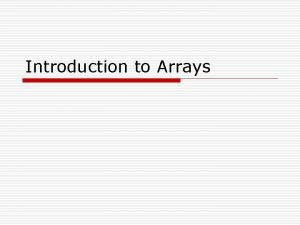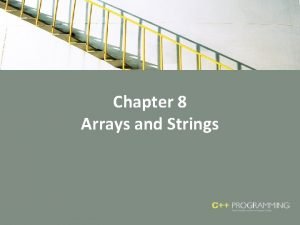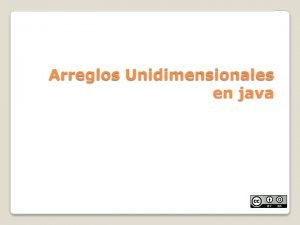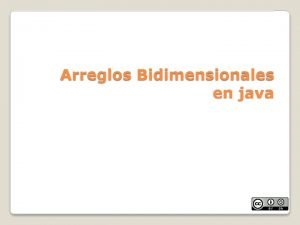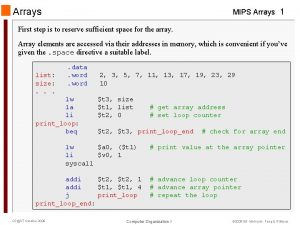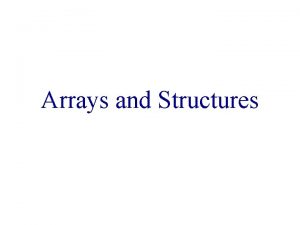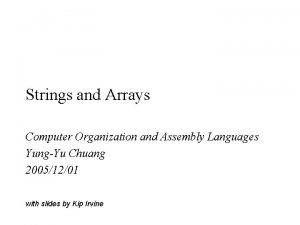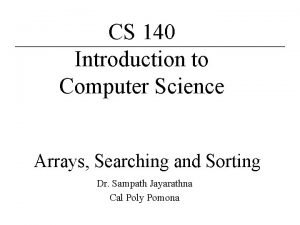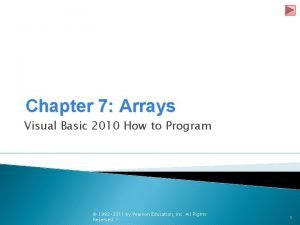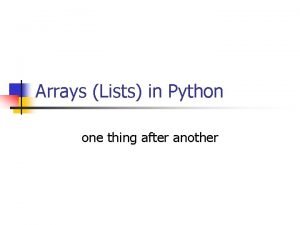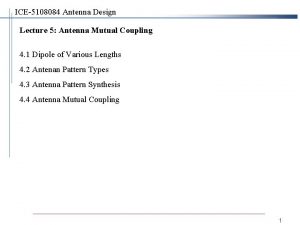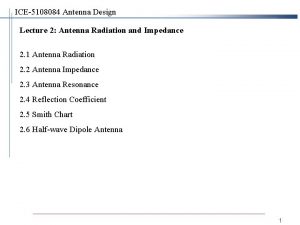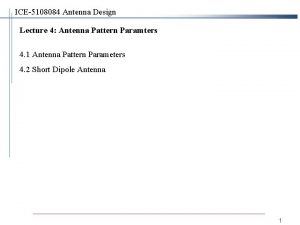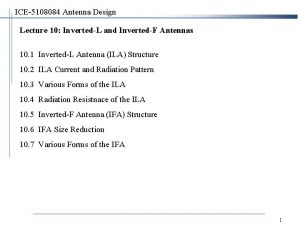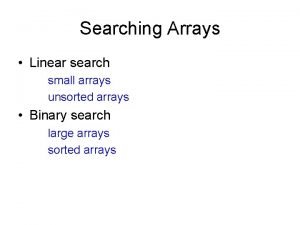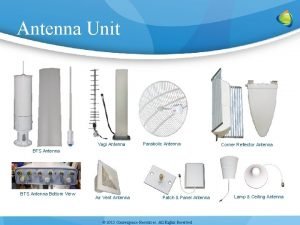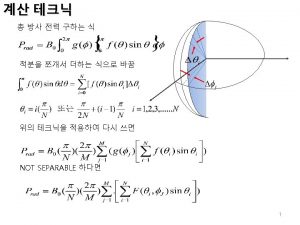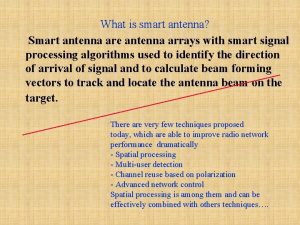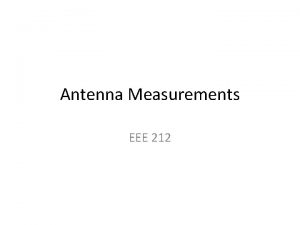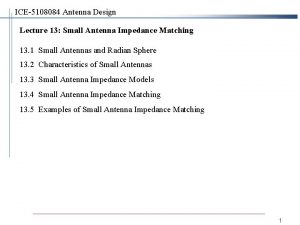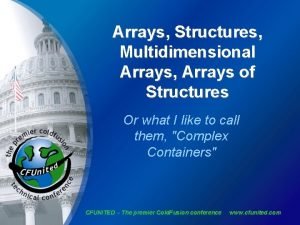ICE5108084 Antenna Design Lecture 14 Linear Antenna Arrays


















- Slides: 18

ICE-5108084 Antenna Design Lecture 14: Linear Antenna Arrays 14. 1 Introduction to Antenna Arrays 14. 2 Linear Antenna Arrays 14. 3 Theory of Linear Antenna Arrays 14. 4 Examples of Linear Antenna Arrays 1

14. 1 Introduction to Antenna Arrays § What is an antenna array? - Distribute many of a same radiating element over a line or a plane or a surface. - Combine array elements using a feed network for 1) high directivity (narrow beamwidth), 2) a scanned main beam, 3) multiple beams (a multi-beam antenna), 4) a shaped main beam 2

14. 2 Linear Antenna Arrays § Why linear antenna arrays? - To obtain a narrow beam in one direction and a broad beam in the other direction (= a fan beam). - Or to scann a fan beam in one direction. Example = a search antenna in azimuth plane 3

14. 3 Theory of Linear Antenna Arrays § Array factor: - Far-field approximation to the radiated field: parallel-ray approximation - Far field of a single element field; 4

- Far field of two elements: At x = 0, antenna 1 with I 1; at x = d, antenna #2 with current I 2 5

- Two-element array factor example: 6

- Principles of pattern multiplication: 7

- Array factor of a linear array: Number of elements: N Element spacing: d Element phase shift: α 8

- Beam scanning: The main beam is tilted toward the direction of decreasing phase. - Broadside array: main beam is normal to the array axis 0 = 90° - Scanned-beam array: main beam is tilted away from the array normal 0° < 0 < 90°, 90° < 0 < 180° - Endfire array: main beam is in the direction of the array axis 0 = 0°, 180° 9

- Array factor of a uniformly excited linear array: - Properties of AF of a uniformly excited linear array: Period: 2π Even function of ψ Symmetric about π Main-null (1 st null) distance: Δψ = 4π / N Sidelobe null distance: Δψ = 2π / N Even 10

- Graphical method for plotting the array factor: Example: N = 4, = π/2, d = /2 11

- Grating lobes (격자엽): additional main beams occurring when the element spacing is too large. 12

- Grating lobe example: N = 10, broadside 13

Example: N = 10, endfire 14

14. 4 Examples of Linear Antenna Arrays § WERA (Wav. E RAdar) ocean radar system - 16 -element monopole linear array - HF surface wave radar for oceanography - University of Hamburg 15

§ 4 -bay batwing antenna (super-turnstile antenna) array for FM radio broadcast - Super-turnstile antenna: Horizontally polarized Omnidirectional in the horizontal plane Wideband § 4 -dipole array for digital TV reception - Wire bowtie antenna = fan dipole antenna: wideband - Wire-grid ground plane: small weight, low wind resistance 16

§ Cylindrical reflector antenna feed: - University of Sydney - Molongo Observatory Synthesis Telescope (MOST) - 843 MHz, reflector 11. 6 × 778 m, feed 352 elements § Base station antenna for 4 G cellular communication - 12 -element linear array of crossed dipoles - Crossed dipoles in a baffle (a cavity) 17

ICE-5108084 Antenna Design Lecture 14: Linear Antenna Arrays 18
 01:640:244 lecture notes - lecture 15: plat, idah, farad
01:640:244 lecture notes - lecture 15: plat, idah, farad Parallel arrays in c
Parallel arrays in c Array of arrays c++
Array of arrays c++ Ragged array
Ragged array 潘仁義
潘仁義 C++ parallel arrays
C++ parallel arrays Why do we need arrays?
Why do we need arrays? Dynamic arrays and amortized analysis
Dynamic arrays and amortized analysis Ejemplo de arreglo unidimensional en java
Ejemplo de arreglo unidimensional en java Arreglos bidimensionales en java
Arreglos bidimensionales en java Array mips
Array mips Polynomial representation using array in c
Polynomial representation using array in c Strings in assembly language
Strings in assembly language Global arrays in c
Global arrays in c Computer science arrays
Computer science arrays Searching and sorting arrays in c++
Searching and sorting arrays in c++ Arrays visual basic
Arrays visual basic Python parallel arrays
Python parallel arrays Array advantages and disadvantages
Array advantages and disadvantages



